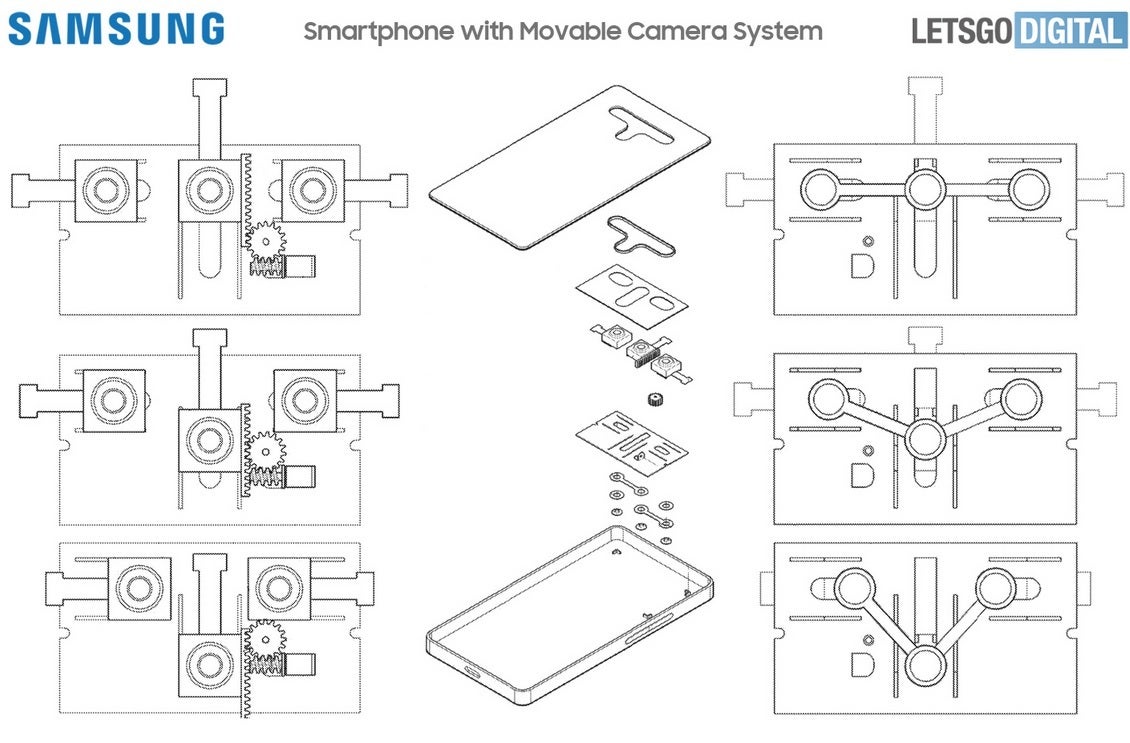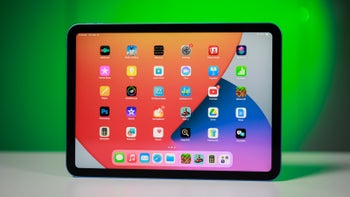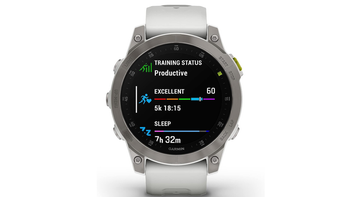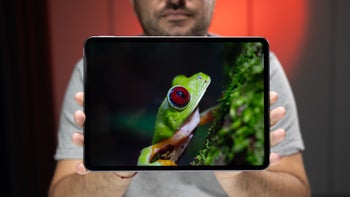Samsung Galaxy S22 line might use this system to improve low-light photos and portraits

Samsung has filed a patent application with the United States Patent and Trademark Office (USPTO) showing how movable camera sensors can be used to help users switch between two different lenses with different apertures. Spotted first by LetsGo Digital, this will allow the user to change the aperture being used for a specific photo depending on lighting conditions. When the time comes to snap a photo under dark conditions, a switch to a lens with a wider aperture will allow more light in.
Samsung files patent application for camera system that features variable apertures
The Galaxy S9 was Sammy's first to employ a dual-aperture system and it allowed the aperture on the camera to widen to f/1.5 under low-light conditions and narrow to f/2.5 under bright conditions. The patent, titled "Movable cameras with adaptive Field of View (FoV)," shows a triple-camera setup with a wide-angle, ultra wide-angle, and telecopic lenses with each sensor able to switch positions. The camera in the middle can move up and down while the other two sensors move sideways.

Images from Samsung's patent application. Credit LetsGo Digital
Additional cameras can be added, but for illustrative purposes let's assume that there is a triple-camera setup with a wide-angle lens in the middle, the ultra-wide lens on the left, and the telescopic lens on the right. In an alternative arrangement, the camera sensors are arranged in a triangular setup and are placed behind secondary lenses with different apertures. When arranged in a triangle, the cameras have a wider aperture allowing more light in to reach the sensor. When arranged in horizontally, the aperture narrows.
When Samsung worked a variable aperture into the Galaxy S9 and Galaxy S10, it offered the feature only with the wide-angle camera. With the technology shown with the patent, all three cameras mentioned would have the ability to change the aperture depending on lighting conditions.
Besides controlling the size of the aperture depending on lighting conditions, those who like to snap portraits with the blurred bokeh background will be able to use a large aperture to help create the blurry bokeh background. When taking images of a city or shooting a landscape, a smaller aperture is recommended in order to create sharper images.
Another thing to consider is that there are plenty of parts and moving pieces involved that can easily be damaged if the phone takes a sharp fall. Despite the fragility of this system, other phone manufacturers are believed to be working on something similar. LetsGo Digital says that a year ago it reported that Xiaomi was trying to develop a movable camera.
Samsung needs to do something to generate interest in its Galaxy S flagship line.
If Samsung does go ahead and decides to use this system with future smartphone models, it could take some time before we see the technology in the patent make its way onto a Samsung phone. But stranger things have happened and perhaps we shouldn't be too hasty to rule out the possibility of Samsung including this technology with next year's Galaxy S22 flagship series or 2023's Galaxy S23 line.
The Galaxy S21 series got off to a quick start earlier this year, but then faded badly. A movable camera system could provide the manufacturer with the shot in the arm necessary to turn around the flagship line which has sold fewer units than even the 2019 Galaxy S10 series. Can an improved camera system with several moving parts be the answer for the Korean firm?
Samsung needs to do something because if it can't regain momentum, it is going to find itself looking up at Xiaomi in the global smartphone shipping tables.
In case you were curious, the patent was filed by Samsung Electro-Mechanics. This Samsung unit produces several components including printed circuit boards, camera modules, network modules, and semiconductor substrates.










Things that are NOT allowed: